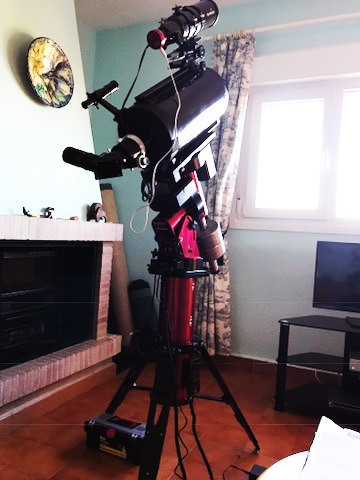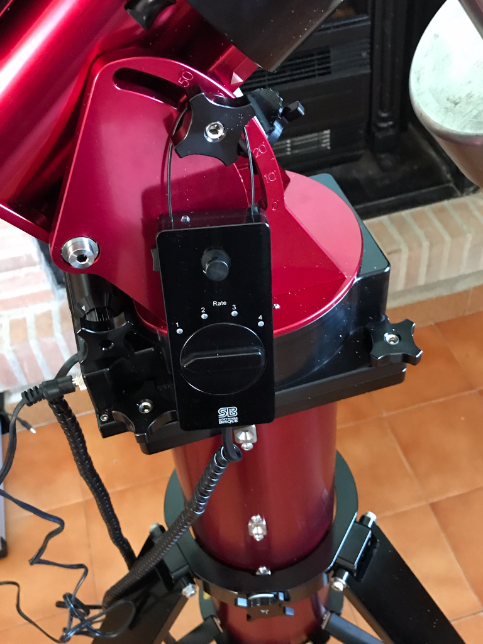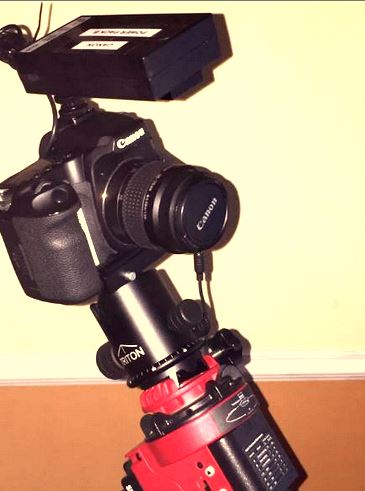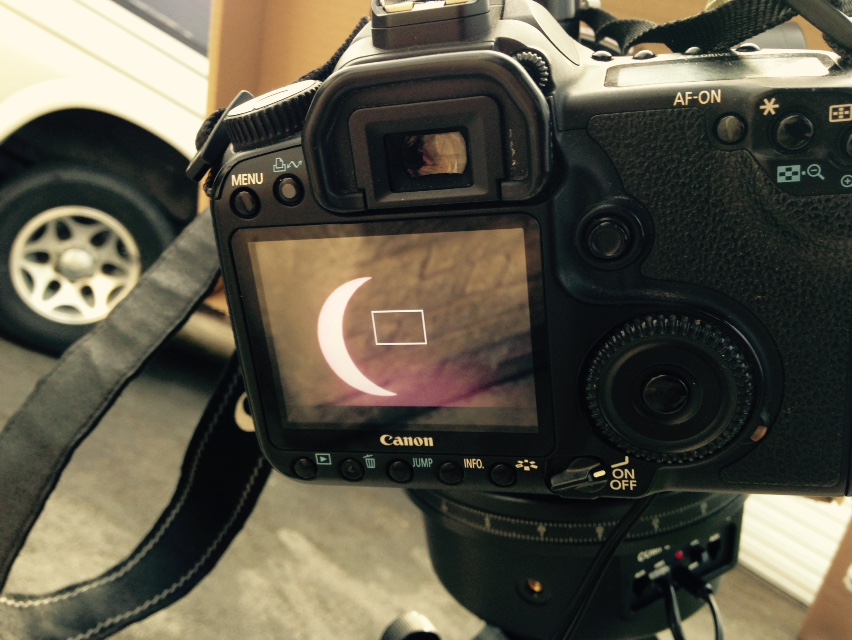Black Redstart
 Tuesday, December 13, 2011 at 2:07PM
Tuesday, December 13, 2011 at 2:07PM Images from Sierra Cabrera
Above and below - a Black Redstart (Redstart means Red Tail)
 [Your Name Here] | Comments Off |
[Your Name Here] | Comments Off |
Ford's excellent
monthly calendar
ABOUT THE WEBSITE - CLICK HERE
My Telescopes
My Main Telescope - C14 and Paramount ME

My new Paramount MyT and 8-inch Ritchey-Chretien Telescope

MyT Hand Controller
My Meade 12 inch SCT on a CGEM (Classic) Mount
My 4 inch Meade Refractor with Sky Watcher Guidescope and ZWO camera on a CGEM (Classic) Mount

Skywatcher Star Adventurer Mount with Canon 40D
My Solar setup using a DSLR and Mylar Filter on my ETX90

DSLR attached to ETX90. LiveView image of 2015 partial eclipse on Canon 40D
I try to log my observing and related activities in a regular blog - sometimes there will be a delay but I usually catch up. An index of all my blogs is on the main menu at the top of the page with daily, weekly or monthly views. My Twitter feed is below. I am also interested in photograping wildlife when I can and there is a menu option above to look at some of my images. I try to keep the news feeds from relevant astronomical sources up to date and you will need to scroll down to find these.
The Celestron 14 is mounted on a Paramount ME that I have been using for about 10 years now - you can see that it is mounted on a tripod so is a portable set up. I still manage to transport it on my own and set it all up even though I have just turned 70! It will run for hours centering galaxies in the 12 minute field even when tripod mounted.
 Tuesday, December 13, 2011 at 2:07PM
Tuesday, December 13, 2011 at 2:07PM Images from Sierra Cabrera
Above and below - a Black Redstart (Redstart means Red Tail)
 Tuesday, December 13, 2011 at 6:35AM
Tuesday, December 13, 2011 at 6:35AM I have started a new library of reference images based on their recession velocity and thus distance. Galaxies that are too far away will have supernovae that are too faint to image in 30 second exposures. Using a maximum recession velocity of 13000km/s and a Major Axis of at least 2 minutes of arc I have compiled an initial list of galaxies( that I call group A ) which works out at 1666 galaxies. I have ordered the list by increasing Right Ascension and have manually produced a text file (after much fiddling with Excel) and imported this into Orchestrate. This means that I can start an imaging session at any RA value depending on the Local Sidereal Time and the RA range visible. I am in the process of generating other lists based on the same and smaller Major Axis Values(MA). One advantage of Orchestrate is that it is possible to cut out chunks corresponding - for example - to a particular hour of RA for MA > 2 minutes - and combine this with - for example- the same hour of RA and a smaller MA - or other combination if required. The source catalogue for the data is the 3rd Reference Catalogue of Bright Galaxies by De Vaucouleurs otherwise known as RC3 so I started with a list of 23000 galaxies from which I am generating my imaging session scripts. I had initially hoped to do this using the Sky6 Data Wizard but that could only be used with databases already in the Sky6 catalogues. Self generated Sky Databases could be produced but they did not work with Data Wizard so I could not filter galaxies by recession velocity. SkyX evidently will do this and I note that an earlier (RC2) catalogue is included (less galaxies). I recently purchased SkyX but am struggling to work out how to use the renamed Data Wizard for my purpose. Thus the manual production and filtering of RC3 for Orchestrate.
 Tuesday, December 13, 2011 at 12:04AM
Tuesday, December 13, 2011 at 12:04AM Now that I have resolved the issues with the Paramount and the C14 I can run automated galaxy imaging sessions and last night managed to image 227 galaxies as part of the supernova search programme. The Moon started to seriously get in the way about 1 am local time so I gave up. To build up my new galaxy library I am tempted to let the telescope run all night and go to bed one moonless night but it is always a risky strategy! It is certainly quite a bonus not to have a dome to rotate!
This is one of the galaxies imaged - PGC 9795
Over the past 2 weeks I have imaged almost 1000 galaxies and will start another cycle of the same galaxies to see if any supernovae have occurred as well as starting a new cycle to increase the size of the galaxy library.
Galaxy PGC 10052 was also imaged.
This Barred Galay is PGC 2901
